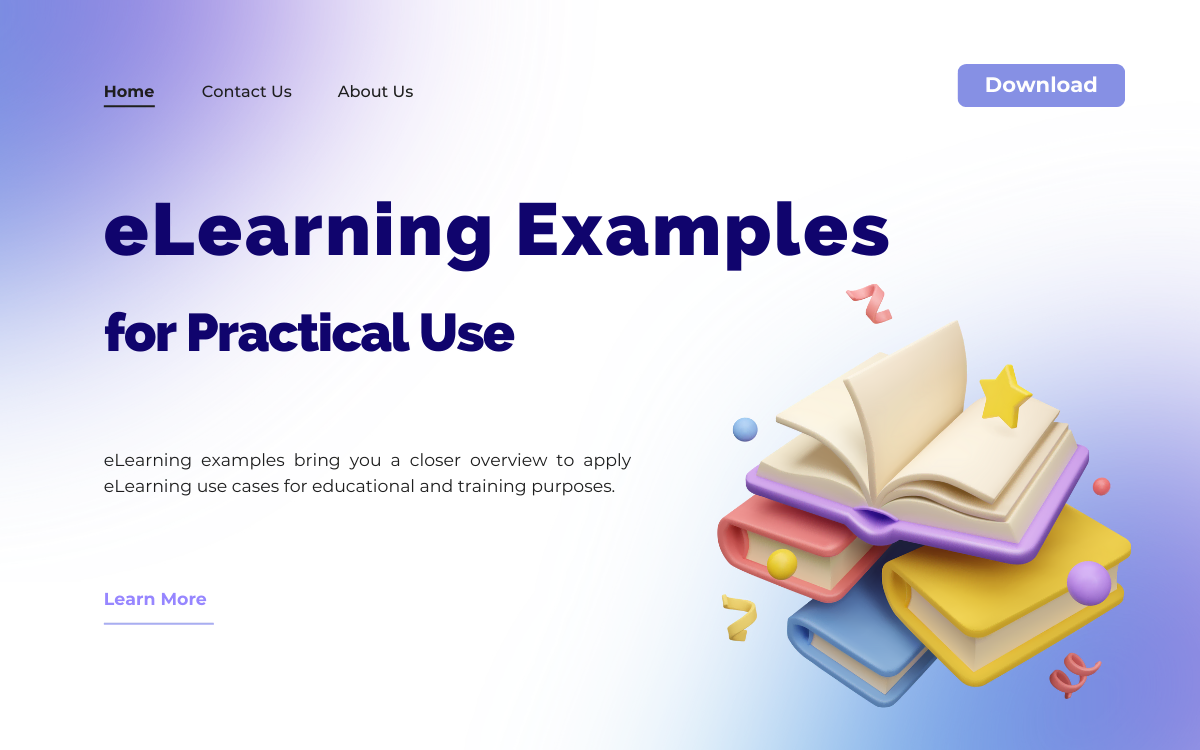eLearning examples bring you a closer overview of applying eLearning in practical use for both educational and training purposes. Let’s learn how to apply eLearning for real-world use cases in today’s blog.
In today’s stage, eLearning has become the sweetcakes for all participants – not only for educators, teachers, and students but for companies entering corporate learning as well. With that in mind, eLearning applications are forecasted to be in service for versatile use cases. As long as human demand for education and training still exists, eLearning will be an attached keyword persisting for the long run. This gives birth to a relevant concern, how to apply eLearning in practical circumstances? Are there any eLearning examples that you can apply for both educational and corporate purposes? We will answer thoughtfully in today’s blog.
Transitioning from the “why” of eLearning to the “how,” one powerful tool that bridges the gap between theory and practical application is ActivePresenter. Recognized as a comprehensive eLearning authoring software, ActivePresenter empowers educators and corporate trainers alike to transform static content into dynamic, interactive learning experiences. Its strength lies in its versatility, offering a robust suite of features – from sophisticated screen recording and video editing capabilities to advanced interactions, quizzes, and simulations. This means you can use the same platform to create an engaging science lesson complete with demonstrations, a compliance training module featuring realistic scenarios, or an onboarding program with interactive software guides. By providing the tools to build rich, multimedia content and assess understanding effectively, ActivePresenter directly addresses the concern of how to apply eLearning in practical circumstances, serving as a single solution for the diverse needs of both educational institutions and the corporate world.

- Onboarding Training Process
- Scenario-based Learning
- Game-based Learning
- Question Pools and Quizzes
- Social Collaborative Learning
- Personalized Learning

eLearning Example #1. Onboarding Training Process
Onboard training is the process of giving new hires the resources and knowledge they need to succeed in their roles and at the organization. Welcoming new employees to a company is always a must-do activity for the internal training department of any firm. However, if the company is on a great scale and has different onboard dates, then the onboarding process could be a daunting task for employers. For this reason, an automated training process could do the heavy work for them.
Corporate trainers could go the extra mile to possess newcomers’ attention rate by bringing in interactive activities when developing training content. By doing so, the company not only leaves a good impression on new hires but also reduces their workload for the onboarding process. It’s exactly like killing two birds with one stone, isn’t it?
Let’s see how this onboarding eLearning example could remove the burden on corporate trainers to instruct newcomers to use the company’s platform. Go to slide 22/45 to practice on your own and click full screen in the toolbar to enjoy a broader view. Link to download create and manage an order in Odoo here ( You need to install ActivePresenter first. Link download is provided at article’s end.)
eLearning Example #2: Scenario-based Learning
Scenario-based learning is the learning type that simulates real-world scenarios and assesses learners’ answers in a responsive manner. It was adopted in eLearning for a certain time, but its application can opt for both school and workplace learning.
Since human brains tend to remember stories with details, scenario-based on the one hand links all information into a logical flow chain in learners’ minds. But it still attains the lessons/training session at its best quality on the other hand. Learners will no longer join in the lessons/sessions passively but actively immerse in the flow of the course. Specifically, scenarios-based eLearning examples could be ordering in a restaurant, medical check-up procedures, and specific training skills for employees.
eLearning Example #3: Game-based Learning
Gamification and game-based learning is in hot search for recent years because of their natural attraction – provoking winning hunger in each participant. Based on the game-based design, learners have to process all learning content that game creators set up to move closer to winning the game. For detail, you may learn more about gamification in eLearning.
Why is Game-based Learning effective? Because game-based lessons are able to motivate each learner by setting a system of rewards: scores, gifts, and trophies. In addition, conflicts, game rules, and feedback series are also applied to grab learners’ concentration. Let’s see how game-based design can drive focus in this eLearning example.
Game-based learning examples may spark your interest:
- Turn homework assignments into doable game missions.
- Develop key-note information into a game-based session to recall memory.
- Complete the game for awaiting rewards.
eLearning Example #4: Question Pools and Quizzes
By nature, quizzes are a powerful tool designed for learners to retrieve key information after a lesson ends. Moreover, quizzes are favorably applicable for exams to test learners’ understanding of knowledge. Quizzes in eLearning inherit the natural characteristics of traditional ones but take a further step to track and trace all learners’ performance in a real-time process. That means, it will record learners’ activities including correct numbers, time spent and final scores, etc. right after learners submit the answer. In doing so, using eLearning quizzes will be beneficial for both sides – quiz creators and quiz doers. You could utilize quizzes in game-based lessons as well, take this project as the interactive eLearning example for slide pools and quizzes.
eLearning Example #5: Social Collaborative Learning
Social Collaborative Learning is one of the learning ways that divide learners into specific groups to work together to finish any task, address any problems to figure out a solution.
By opening social collaborative learning, learners are able to develop soft skills such as leadership skills and interpersonal skills. They can exchange ideas and solutions with fellow learners. Doing so makes the educational process a genuinely active process beneficial to all participants.

eLearning Example #6: Personalized Learning
Before, the world goes around from massive production – producing the same product to as many people as possible. When reaching a limit, the crowd feels enough. They no longer want to own the same product and wear the same outfit as other people. They want product to be different, be unique that can bring out their best personality, and have a say in this world. In other words, they do not want common products, they want customized products. For that reason, eLearning in the initial phase is to reach as many learners as possible. But to play the long game, customized eLearning is one of the foreseeable scenarios.
Personalized learning is the best eLearning example that centers the instructional process around the student, “learner-centric”. Then, everything else is planned to satisfy their interests, needs, and skills. Students take an active role in deciding what, how, when, and where they learn in this way. That is what the term “personalized” means.
What types of content are personalizable?
- Learners should be addressed by name: “Good morning, [Name], and welcome to class.
- Set unique learning objectives: Let them decide which topic they want to learn for today (as long as they can ensure the learning progress)
- Personalize Feedback: For students, feedback and scores (if any) are displayed in real-time alongside the training.
You may refer to this personalized eLearning example to add in your list.
Last Words
From these 6 eLearning examples listed above, you are able to produce your own creative and effective eLearning project. Authoring tools could be your favorable supporter in this journey ahead. The reason? Because of its multifunctional eLearning features like interactive presentation, video editing, screen recording, simulation, etc. If these features are what you are looking for, ActivePresenter is your exact eLearning solution to solve the issues you are facing. Feel free to download ActivePresenter with an unlimited trial to start your own project.

See also:
Custom eLearning Solutions in Corporate Training